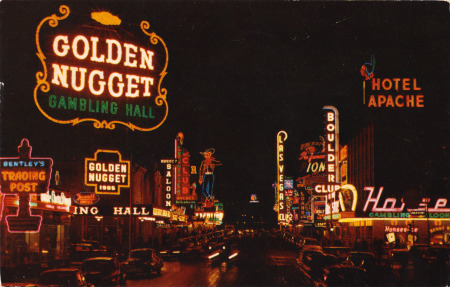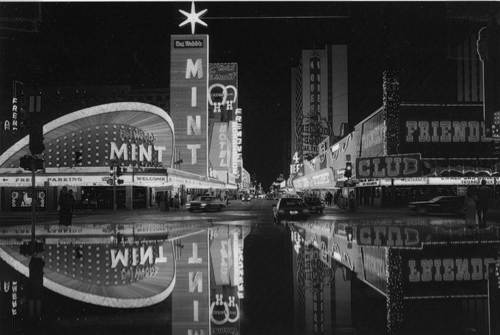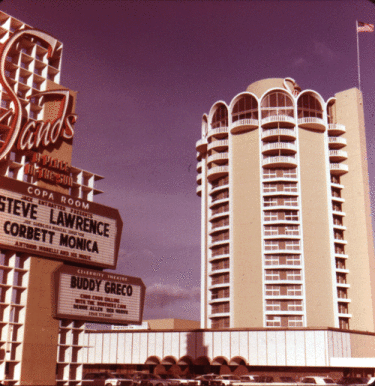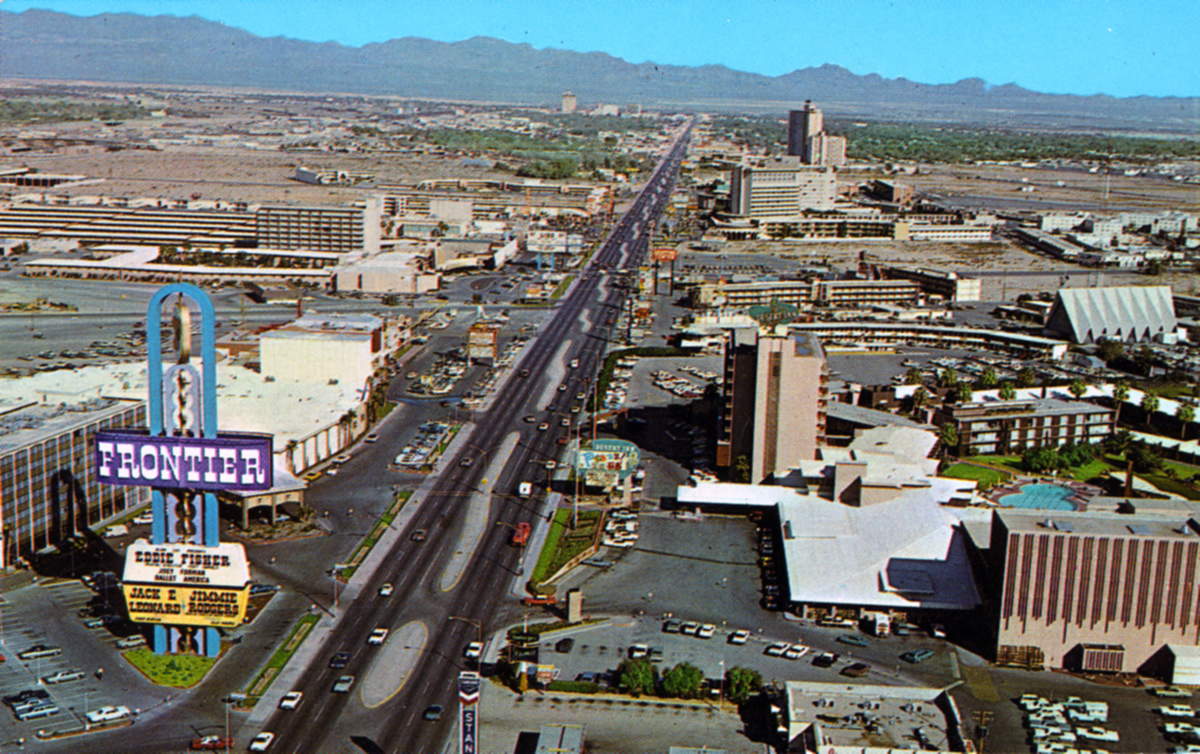Entries in las vegas history (51)
The Story of Classic Las Vegas: An Overview
It's funny, as we get older, we don't always remember the things we should.
Case in point, this video I created a few years ago and put up on Google Videos. Well, Google Videos merged with YouTube and this blast from my creative past came bubbling up earlier today when I logged on to YouTube to listen to a playlist.
For a moment, I was surprised that it was listed as private. I immediately changed the setting to public and want to share it with you:
If you would like to order your copy of The Story of Classic Las Vegas: An Overview go here.
Neon Museum Officially Opening Oct. 27th
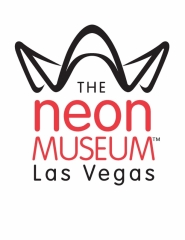
THE NEON MUSEUM TO OFFICIALLY OPEN TO THE PUBLIC ON SATURDAY, OCT. 27
Featured Attractions Include Guided Tours of Neon Boneyard,
New Visitors’ Center Inside Historic La Concha Motel Lobby
After more than 15 years of planning, the Neon Museum, a Las Vegas historical institution dedicated to the preservation and celebration of some of the city’s most distinctive architectural landmarks, will officially open its doors to the public on Saturday, Oct. 27.
The Neon Museum, home to a collection of more than 150 neon signs dating from the 1930s, is the largest collection of neon signage in the world and a unique record of Las Vegas’ colorful history. Inside a two-acre outdoor museum space known as the Neon Boneyard, iconic signs from the city’s most celebrated properties — including the Moulin Rouge, the Desert Inn, the Flamingo and the Stardust — are displayed alongside those from various other bygone restaurants, hotels and businesses.
The museum’s new visitors’ center will be located on-site in the recently rehabilitated La Concha Motel lobby, the seashell-shaped, Mid-Century Modern architectural masterpiece designed and built by architect Paul Revere Williams. Originally constructed in 1961 on Las Vegas Boulevard South, next to the Riviera Hotel’s current location, the La Concha lobby was saved from demolition in 2005 and moved to its current location in downtown Las Vegas in 2006.

According to Bill Marion, chair, Neon Museum’s Board of Trustees, the museum’s official opening will bring both a significant cultural and economic impact to the community. “There is renewed interest in ‘old’ Las Vegas and in the rediscovery of the historical downtown area. The Neon Museum will play a major role in this renaissance by bringing new visitors to downtown Las Vegas, by creating additional opportunities for tourism growth and by adding to the ongoing economic revitalization of the area,” says Marion.
Tours of the Neon Boneyard, which last approximately 45 minutes, will be available to the public every half hour starting at 10 a.m., with the last tour departing at 4 p.m., every Monday through Saturday. Tickets are $18 for adults; $12 for students with valid ID, senior citizens, veterans and Nevada residents. Children ages 6 and under are free. Tour capacity is limited. To ensure admission on the date and time desired, visitors are advised to purchase their tickets in advance through the Neon Museum’s Web site, www.NeonMuseum.org. The La Concha Visitors Center will be open Monday through Saturday from 9:30 a.m. until 5:30 p.m. Both facilities are located at 770 Las Vegas Blvd. North, Las Vegas, NV, 89101.
“Visitors from around the world have been eagerly anticipating the Neon Museum’s opening for many years, so it gives us tremendous pleasure to be able to unveil this remarkable and historic collection to the public,” says Danielle Kelly, executive director, Neon Museum. “Our goal is to give guests an enhanced appreciation for Las Vegas’ rich visual culture while celebrating the beauty and craftsmanship of a distinctly modern art form.”
In addition to the Neon Boneyard and visitors’ center, the Neon Museum has partnered with the City of Las Vegas to create the Las Vegas Signs Project, in which restored signs from the museum’s collection have been installed on Las Vegas Boulevard between Sahara and Washington Avenues — a stretch of roadway that has been designated a National Scenic Byway by the U.S. Department of Transportation. Currently, seven restored signs from the 1950s are on display, including the Silver Slipper, the Bow & Arrow Motel, Binion’s Horseshoe, Society Cleaners, the Lucky Cuss Hotel, the Normandy Hotel and the Hacienda Horse and Rider.
The museum’s collection also includes nine restored signs installed as public art throughout the downtown area. The Downtown Gallery begins on Fremont Street at Las Vegas Blvd. and extends west toward Third Street. Signs in this gallery include Aladdin’s Lamp, The Flame Restaurant, the Chief Court Motel, Andy Anderson, The Red Barn, Wedding Information, the Nevada Motel and Dots Flowers. Further south, the 5th Street Liquor sign, located on Casino Center St. near Garces Ave., features a classic example of the type of animation that was frequently used in neon signage, and the Landmark Hotel sign, located on Paradise Road near Convention Center Dr., has been placed near the site where the iconic property stood until its demolition in 1995.
ABOUT THE NEON MUSEUM
Founded in 1996, the Neon Museum is a non-profit 501(c)3 organization dedicated to collecting, preserving, studying and exhibiting iconic Las Vegas signs for educational, historic and cultural enrichment. In addition to a two-acre outdoor exhibition space known as the Neon Boneyard, the museum also encompasses a visitors’ center housed inside the former La Concha Motel lobby as well as 16 restored signs installed as public art throughout downtown Las Vegas. Public education, outreach, research, archival preservation and a grant-funded neon sign survey represent a selection of the museum’s ongoing projects. Both the Neon Boneyard and the La Concha Visitors’ Center are located at 770 Las Vegas Blvd. North in Las Vegas. For more information, visit www.NeonMuseum.org or follow us on Facebook or Twitter.
El Cortez is going for Historic Designation
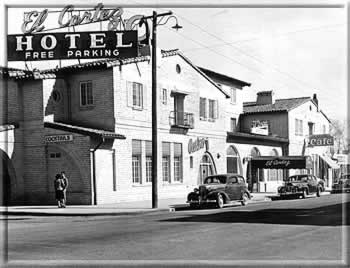
The owners of the venerable El Cortez are working towards getting the venerable downtown casino on the National Register of Historic Places.
It's brick facade dates back to 1941 when Marion Hicks built the small casino with 59 rooms. When Bugsy Siegel finally made that long drive up the highway in the early 1940s, it was not to have a fever dream about building a carpet joint on the Strip but to muscle his way into the race wire at the El Cortez. But the Hollywood story sounds betterm no doubt. Siegel finally got his hands on the El Cortez when Hicks sold the property to him in 1946. Renowned Southern California architect, Wayne McAllister did the remodel on the El Cortez in 1946.
Local hotel entrepreneur J. Kell Houssels, Jr, bought the property and under his stewardship it thrived.
In 1963, young Jackie Gaughan, who had come to Las Vegas in 1943 when he was stationed at the old Air Base (that would become Nellis). He moved his wife Roberta and two sons, Michael and Jackie, jr to Las Vegas in 1951. He bought a small 3% of the Boulder Club and 3% of the Flamingo with partner Eddie Barrick. Jackie had a knack for sports books and handicapping. In 1961, he and partner Mel Exber bought the Las Vegas Club and in 1963, they bought the El Cortez. Gaughan hired Wayne McAllister to oversee the design and construction of a new room tower.
Jackie invented the Fun Book, filled with coupons for free drinks, free slot pulls and two for one dinners. Like Benny Binion, he had a knack for understanding and treating his customers like kings.

Today, the El Cortez has been restored and is thriving. It is a major partner in the East Fremont Entertainment District.
The application is being put together by historian Pete Moruzzi. It still needs the approval of the State offiice of Historic Preservation and the National Park Service. Unlike many of the casinos on the Strip where anything considered old must be upgraded, paved over or blown up, the El Cortez (and the Golden Gate) have relished their roots and still have their historic bones intact.
It's Spanish Colonial Revival architecture and its role in the post-war development of Las Vegas should not be overlooked.
Dr. Michael Green, historian and teacher at the College of Southern Nevada, says, "I think the El Cortez belongs on the historical registry. It's one of the oldest hotel-casinos in one of the world's leading resort cities. It reflects the architecture of its time. It symbolizes the evolution of Las Vegas through its own history of growth and controversy."
"Its owners have included some figures of considerable historical significance. One of its builders, Marion Hicks, appears to have had some ties to Meyer Lansky, and Moe Sedway and Bugsy Siegel, the owners who came after Hicks, definitely were part of organized crime. Their successors include two of the most important figures in the history of Las Vegas."
"J. Kell Houssels, Sr., owned several casinos downtown and eventually, with the Tropicana, on the Strip, but also was active in other businesses such as transportation and restaurants, and involved in real estate and community development. Jackie Gaughan bought the El Cortez from him with his partners, and Gaughan has been a pioneer in locals casinos and their promotion. The El Cortez contains a lot of Las Vegas history."
When I was growing up in Las Vegas, Fremont Street was the heart and soul of the city. We did our shopping, our dining, our cruising on weekend nights ala American Graffitti , all on Fremont Street. Across the street from the El Cortez was our Sears store with its pylon neon sign. Our moms had no problem taking us to Sears and never blinked twice at the gambling casino across the street.
The roof top sign was added in 1952. The other roof top signs for the El Portal Theater and the five and dime store, Coronet have long vanished from the downtown skyline but the El Cortez management keeps and maintains their sign. It's glowing neon can be seen up and down Fremont Street.
Pete Moruzzi has unearthed a deed for the property that goes back to the mid-1940s. Listed as owners are Moe Sedway, Gus Greenbaum and other mob associates of Benjamin "Bugsy" Siegel. Though Siegel would soon begin to focus on building the Flamingo Hotel out on the Strip, the El Cortez continued to be a major player on Fremont Street. It still is today and we hope for years to come.
We completely support historic designation for the El Cortez.
"Vegas" - Behind the Scenes promo
Vegas, the new show starring Dennis Quaid and Michael Chiklis, premieres on Tuesday night, Sept. 25th, at 10:00 pm on CBS. It has both NCIS and NCIS: LA as lead-ins and Tuesday night is one of CBS' most succesful nights, ratings wise, so this bodes well for this period piece set in 1960s Las Vegas. Quaid plays real-life Las Vegas Sheriff Ralph Lamb while Chiklis plays mob boss Vincent Savino- a fictiional character that has some traits of real life mobsters from that era
While I don't expect the show to strictly to history, I do hope that they get the layout of the Strip and Fremont Street right and I do hope they remember that people did live here and were raising their families here.
Guess we will all find out on September 25th.
In the meantime, here's a behind-the-scenes promo:
"Vegas" has a new promo
Vegas has a new promo. We are really looking forward to the debut in September:
